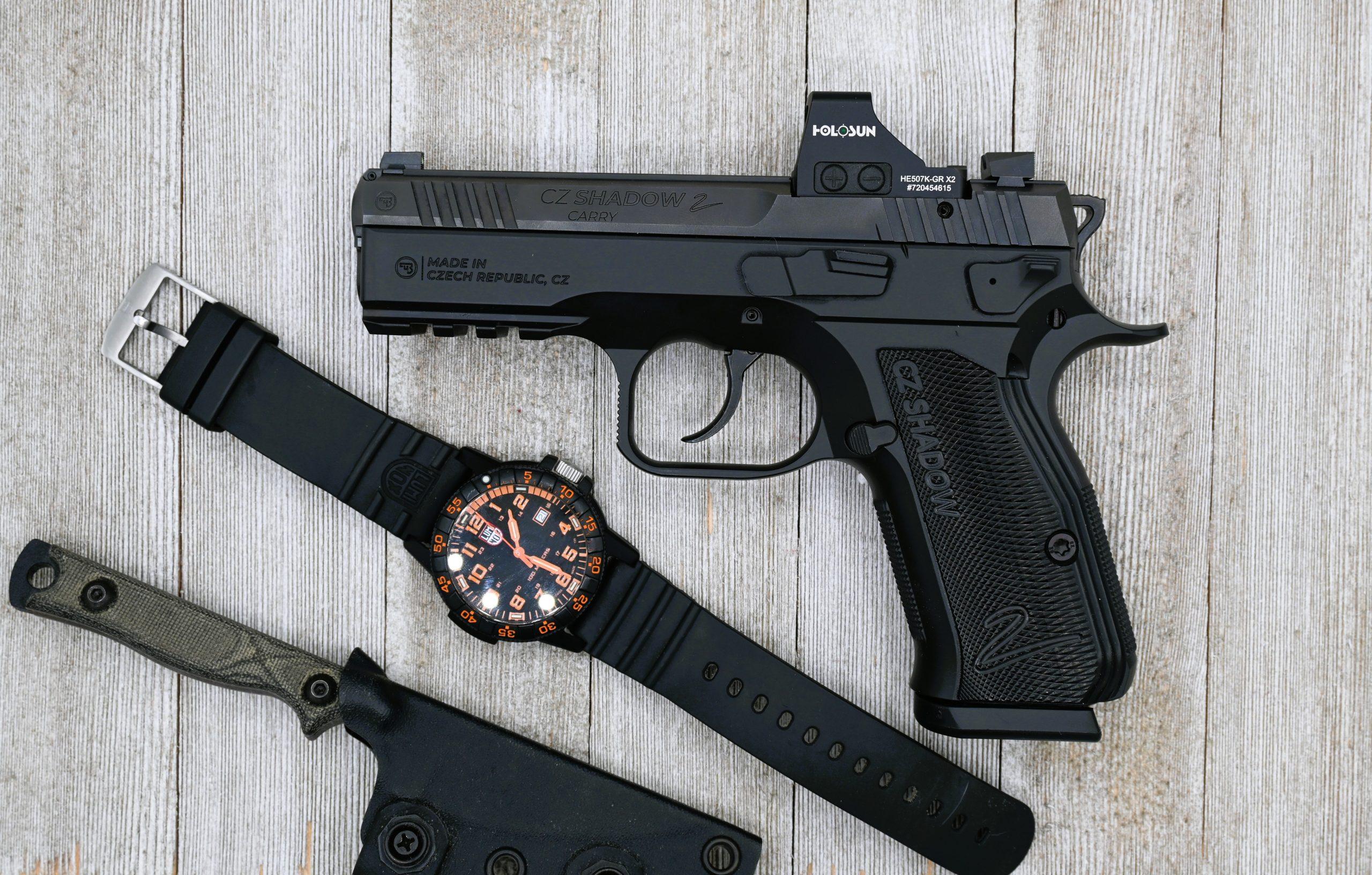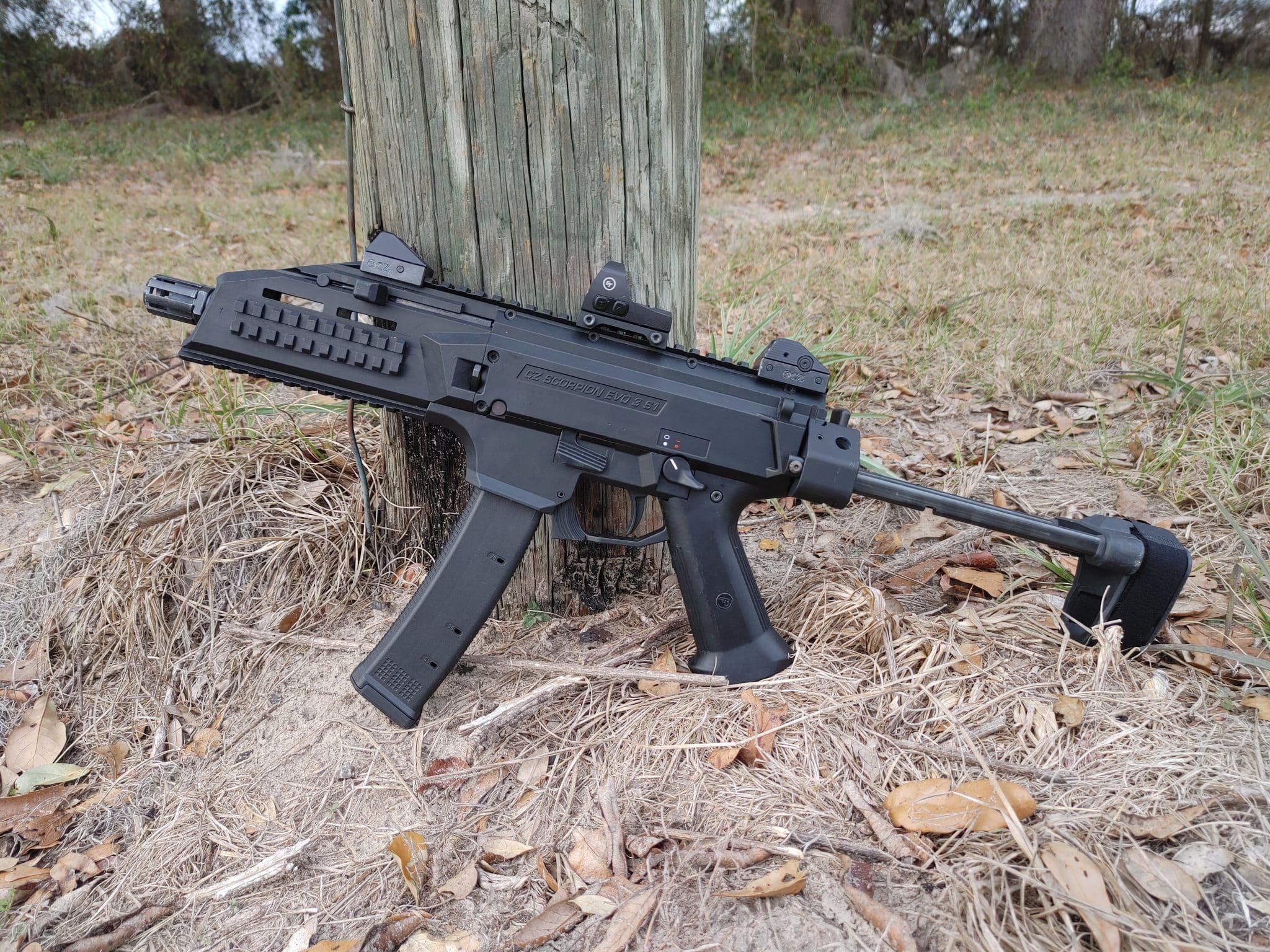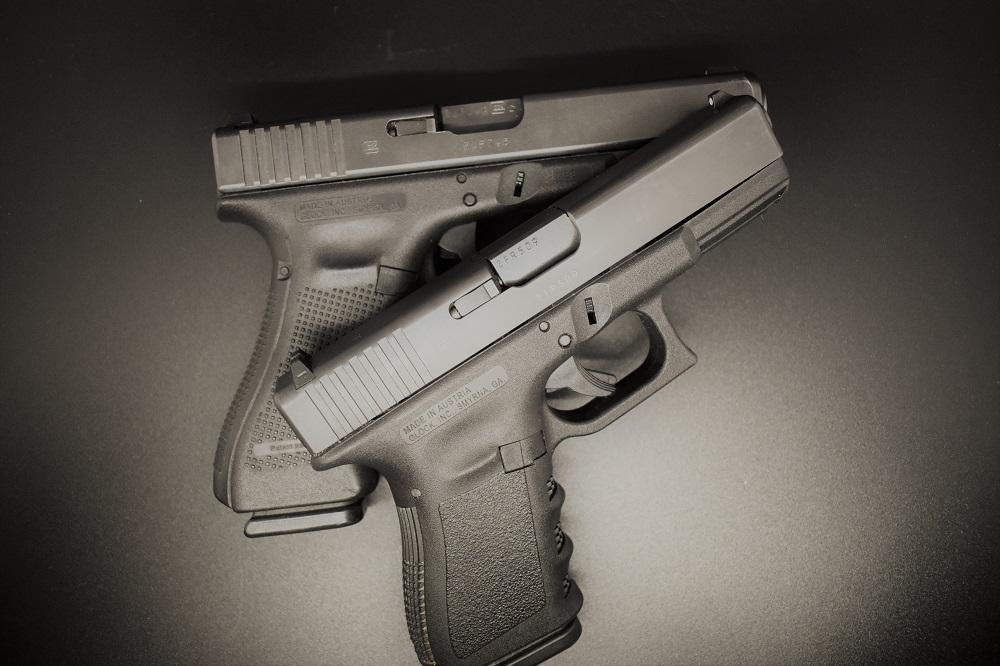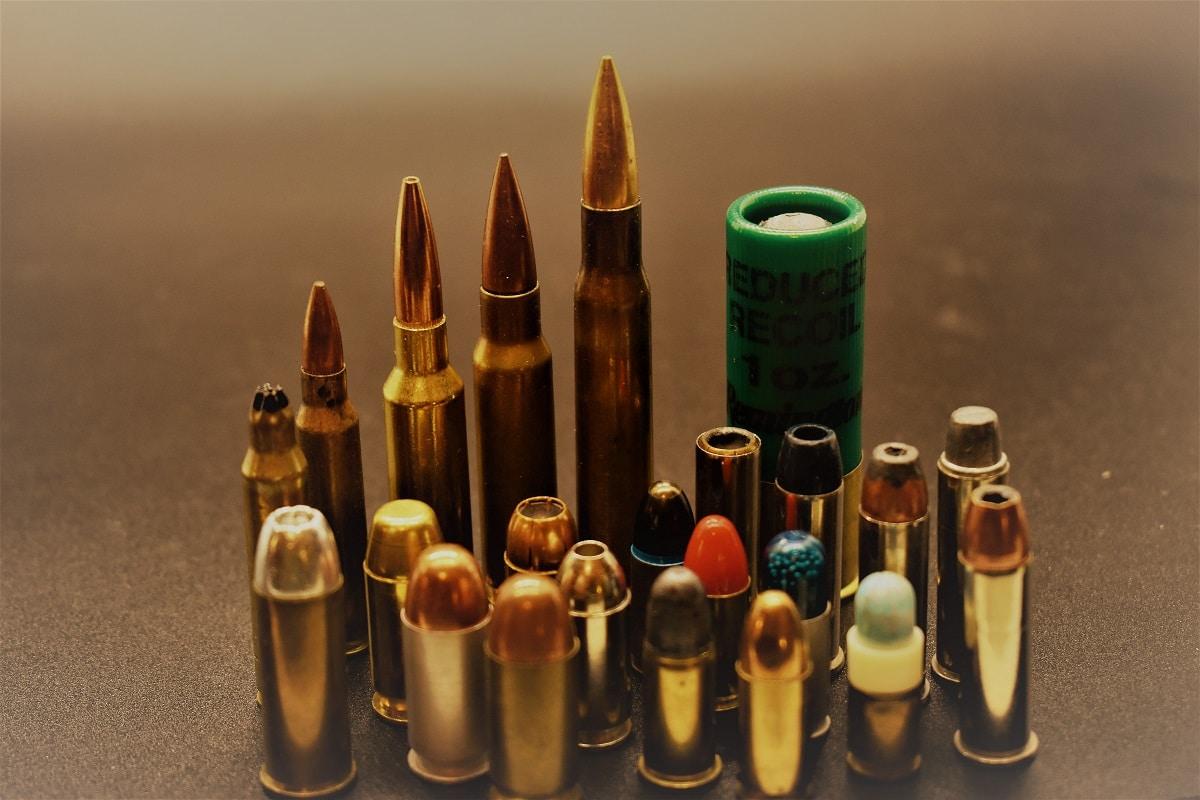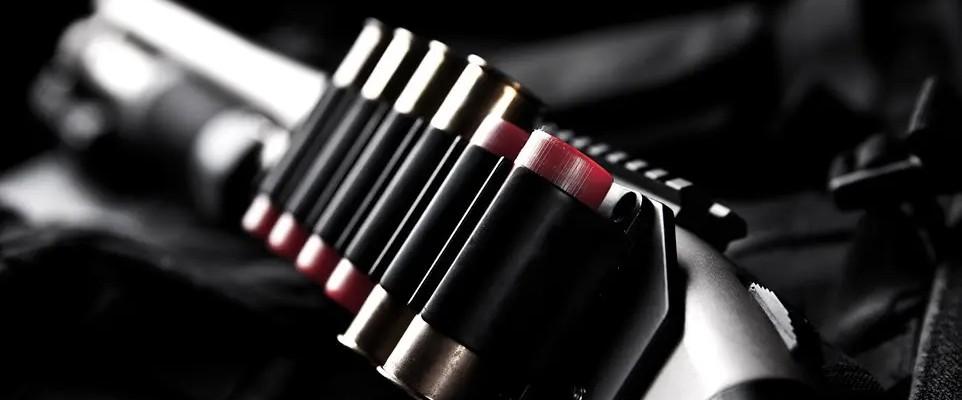Best Rimfire Scopes: Small Calibers, Big Performance
Written By
Michael Crites
Licensed Concealed Carry Holder
Reviewed by
Editorial Team
Learn About The Editorial Team
Share:
Products are selected by our editors. We may earn a commission on purchases from a link. How we select gear.

Updated
Jun 2025
If you’ve been shooting your .22LR with iron sights and wondering whether a scope is worth the investment, let me save you some time: it absolutely is. After putting more than 17 different rimfire scopes through their paces over the past few months, I can tell you that the right optic will transform your shooting experience – whether you’re plinking tin cans in the backyard, hunting squirrels, or trying to punch one-hole groups at 100 yards.
But here’s the thing – not all scopes are created equal, and slapping just any old rifle scope on your .22 isn’t going to cut it. Rimfire cartridges have their own unique characteristics that demand specific features from an optic, and understanding these differences can mean the difference between consistent hits and frustrating misses.
In This Article
Why Use A Rimfire Scope?
Many people, understandably, make the mistake of thinking a scope is a scope. They’ll grab whatever centerfire optic they have lying around and mount it on their .22 LR rifle, then wonder why they can’t get tight groups or why the crosshairs seem to dance around the target.
The problem is parallax. Your typical hunting scope is designed to be parallax-free at 100 or even 150 yards – perfect for deer hunting, but terrible for a .22LR that you’re often shooting at 20 to 50 yards. When the parallax setting doesn’t match your shooting distance, even small changes in your head position behind the scope will shift your point of impact. It’s maddening, and it’ll make you question your shooting ability when the real culprit is your optic choice.
A proper rimfire scope addresses this by being parallax-free at closer distances – typically 50 yards or less. Some of the better models even include adjustable parallax that lets you dial it down to 10 yards, which is incredibly useful if you’re chasing ground squirrels or other varmints out of your yard at shorter distances.
How to Choose a Rimfire Scope
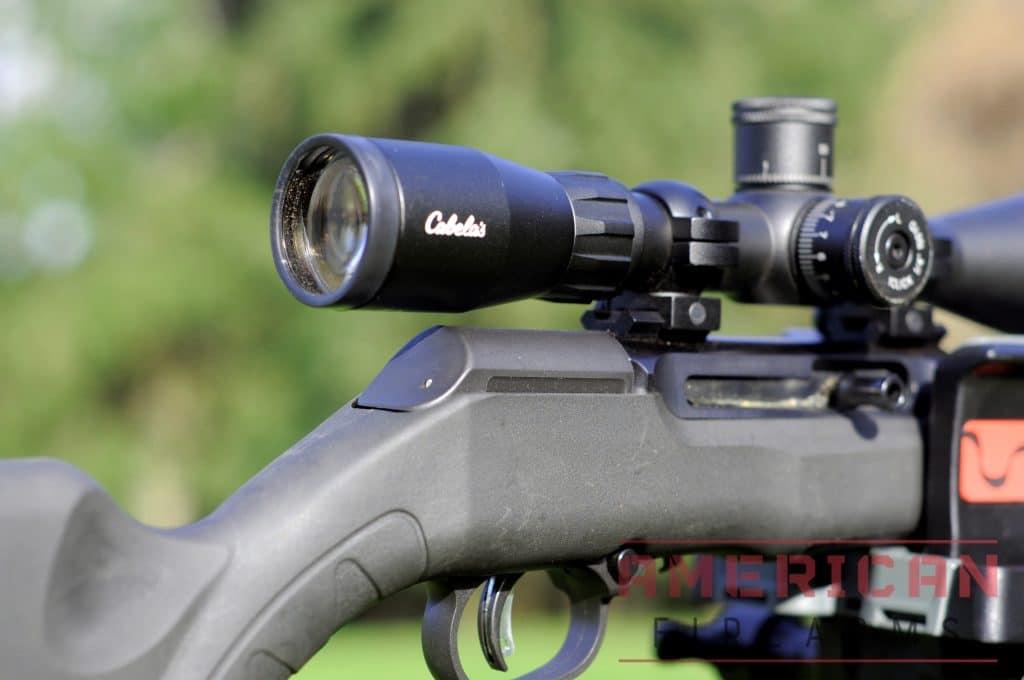
Choosing the right scope for your .22LR doesn’t have to be complicated, but there are some key considerations that’ll make or break your shooting experience. After mounting dozens of different optics on everything from bone-stock Ruger 10/22s to precision rimfire rigs, I’ve learned what actually matters – and what’s just marketing fluff.
Here’s how to cut through the noise and find a scope that’ll serve you well for years to come.
Start With Your Shooting Distance
Before you even think about magnification or features, you need to know where you’ll be shooting. This single factor will drive most of your other decisions.
25-50 Yards (Backyard Plinking) If you’re mainly shooting in your backyard or at close-range targets, you don’t need much magnification. A 2-4x fixed scope or something in the 1-4x variable range will give you plenty of precision without making your field of view so narrow that you lose track of your target. At these distances, a simple duplex reticle is all you need – no fancy holdover marks or mil-dot complexity.
50-100 Yards (Most Common Range) This is where most rimfire shooting happens, and it’s the sweet spot for scopes in the 3-9x or 2-7x range. You want enough magnification to see your targets clearly at 100 yards, but not so much that 50-yard shots become awkward. Most of our top picks fall into this category because they handle the widest variety of shooting situations.
100+ Yards (Long-Range Rimfire) If you’re pushing your .22LR out past 100 yards – whether for precision competition or just because you enjoy the challenge – you’ll want something in the 4-12x or even 6-18x range. Higher magnification helps you see small targets at distance, but remember that .22LR drops like a rock past 100 yards, so you’ll also want holdover marks or reliable turrets for making elevation adjustments.
Understanding Parallax (This Is Critical)
Here’s where most people get tripped up, and honestly, it’s the most important thing to understand when shopping for rimfire glass.
Parallax is the apparent movement of your reticle relative to your target when you move your head behind the scope. When a scope is “parallax-free” at a certain distance, the reticle and target appear to be on the same plane – move your head around, and the crosshairs stay put on your target.
Most centerfire hunting scopes are parallax-free at 100-150 yards because that’s where you’ll be shooting deer. But if you’re shooting a .22LR at 25 yards with a scope set for 100-yard parallax, even tiny movements of your head will shift your point of impact. It’s like trying to hit a moving target when the target isn’t actually moving.
Fixed Parallel Options:
- 50-yard setting: Perfect for most rimfire work, handles everything from 25-100 yards reasonably well
- 75-yard setting: Good compromise if you shoot more at longer distances
- 100-yard setting: Only choose this if you rarely shoot closer than 75 yards
Adjustable Parallax: If you shoot at widely varying distances, adjustable parallax is worth the extra cost. Look for scopes that adjust down to at least 25 yards, with some premium options going as low as 10 yards. Side-focus parallax adjustment is easier to use than objective bell adjustment, especially when you’re shooting from a rest.
Magnification: More Isn’t Always Better
I see too many new rimfire shooters grab the highest magnification scope they can afford, thinking it’ll automatically make them more accurate. That’s not how it works.
Low Magnification (1-4x): Great for hunting small game, plinking, or any situation where you need fast target acquisition. Wide field of view makes it easy to find your target, and low magnification is more forgiving of less-than-perfect shooting positions. If you’re hunting squirrels or rabbits, this is your sweet spot.
Medium Magnification (3-9x, 2-7x): The Goldilocks zone for most rimfire applications. Enough power to see targets clearly at 100 yards, but not so much that close shots become difficult. These scopes handle everything from backyard plinking to small game hunting to casual target shooting.
High Magnification (4-12x and up): Only necessary if you’re doing precision work at longer distances. Great for competition shooting or if you want to see exactly where your bullets are hitting at 100+ yards. The downside is a narrower field of view and less forgiveness in shooting position.
Reticle Selection: Keep It Simple (Usually)
Unless you’re getting into precision rimfire competition, you probably don’t need a complicated reticle. Here’s what actually works:
Duplex/Plex: The classic thick-to-thin crosshair design. Fast to acquire, doesn’t obscure small targets, and works in all lighting conditions. This is what I recommend for 90% of rimfire applications.
BDC (Bullet Drop Compensating): Features holdover marks for longer shots. Can be useful if you shoot at multiple distances regularly, but make sure the BDC is actually calibrated for .22LR velocities. Some are designed for centerfire cartridges and won’t work well with rimfire.
Mil-Dot or MOA: Precision reticles with measurement marks. Great for competition or if you want to learn long-range shooting fundamentals, but overkill for most hunting and plinking applications.
Fine Crosshair: Excellent for precision work where you need to see exactly where you’re aiming on small targets. Can be harder to see in low light or against busy backgrounds.

Common Mistakes to Avoid
Buying too much magnification: That 6-24x scope might look impressive, but you’ll rarely use the high end, and it’ll make close shots unnecessarily difficult.
Ignoring parallax: The biggest cause of accuracy problems in rimfire shooting. Make sure your scope’s parallax setting matches your shooting distances.
Cheap rings and bases: A great scope on cheap mounts is like putting racing tires on a car with bad suspension. Spend a little extra on quality rings – they’re just as important as the scope itself.
Overthinking reticle choice: Unless you have specific precision shooting goals, a simple duplex reticle will serve you better than something complicated.
Buying based on brand alone: Every manufacturer makes both great scopes and mediocre ones. Focus on the specific features and performance rather than just the name on the side.
Testing Methodology
Accuracy & Clarity
To evaluate rimfire scopes effectively, we mounted each optic to a .22 LR rifle and conducted live-fire accuracy testing at 50 yards from a bench rest — the most common practical distance for rimfire shooting.
Tracking & Adjustments
Scope adjustments were put to the test through a turret tracking drill, including box testing to verify whether elevation and windage dials moved the point of impact precisely and returned to zero reliably.
Durability & Build Quality
We exposed each optic to realistic field conditions over a two-week test period. This included controlled drop tests, simulated moisture exposure, and live-fire vibration from 200 rounds.
Low Light Performance
We conducted side-by-side comparisons at first and last light to determine which scopes provided the best image brightness, contrast, and reticle visibility. Illuminated reticles were tested for both usability and glare in dim conditions.
More on our testing process
Rimfire Scope Comparison
| Name | Selection | Price |
|---|---|---|
Best Overall | $161 | |
Best for Target Shooting | $114 | |
Budget Option | $39.99 | |
Best Hunting Option | $89.99 | |
Longest Eye Relief | $149 | |
Budget Runner-Up | $29.99 |
Rimfire Scope Reviews
1. Best Overall: Bushnell Drop Zone Rimfire Rifle Scope
undefined
What we liked:
- High quality build
- Holds zero well
- Fully water resistant & submersible
- BDC marks are easy to see and fun to use
What we didn’t:
- Heaviest of the top performing 22LR scopes
The Bushnell Optics Drop Zone Rimfire Scope is a slightly heavier option at just over 19 ounces – but if you can hang with the extra weight you get some features that are very rare in scopes under $200, in particular, the side parallax adjustment down to 10 meters – so you can get up-close and personal with your targets, and the name Bushnell – which is synonymous with high-quality hunting optics.
Its Bullet Drop Compensating (BDC) reticle system is not only accurate but gets you on-target over distances up to 500 meters via anticipating bullet drop.
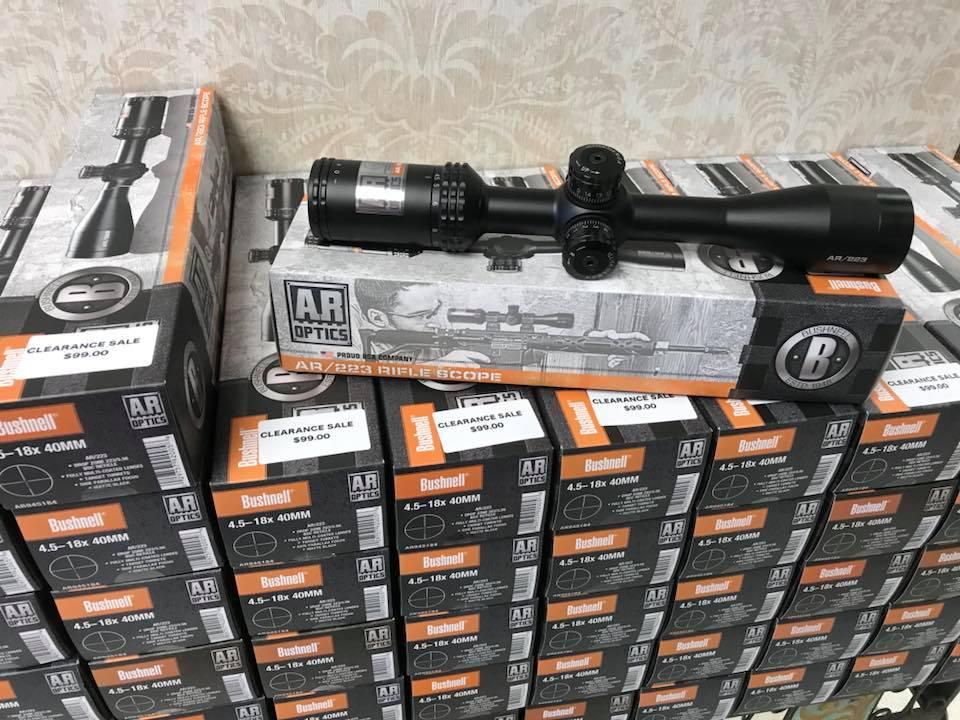
You can also completely immerse the scope in water without damaging any internals, so it’s more than adequate for general use in the rain and humidity of hunting season. We tested it in a 5-gallon Home Depot bucket and it lived up to our expectations.
The Drop Zone’s clearly identifiable reticule marks are calibrated for 38-40 grain, 22 Long Rifle high-velocity loads, and once you zero at 50 yards you’ve got clear aiming points up to 125 yards.
These easy to see demarcations invite you to stretch your range a little – and start shooting from longer and longer distances.
Here’s how the Drop Zone scored in our tests:
| Criterion | Score (0-10) | Measured/Test Data |
|---|---|---|
Optical Clarity & Coatings | 8 | Clear image slight edge softness at max zoom |
Magnification Range | 9 | 4–16× versatile for plinking to long-range fun |
Reticle Utility | 8 | Duplex reticle good contrast |
Turrets & Zeroing | 8 | Easy tracking crisp clicks |
Parallax | 9 | Fixed at 50yds sharp focus at common rimfire ranges |
Build Quality & Weight | 8 | Solid aluminum 13 oz |
Value | 9 | Great all-around value |
Box Test Tracking @100yd | 8 | 7.2" 7.0" 6.9" 7.1" ≈1.05 MOA |
Reticle Visibility | 9 | Sharp and clear across all zoom levels |
Eye Relief | 8 | 3.8"–4.0" consistent and comfortable |
Grouping 25yd | 8 | 0.4" 5-shot group |
Grouping 50yd | 8 | 0.7" 5-shot group |
Grouping 75yd | 7 | 1.1" 5-shot group |
Grouping 100yd | 6 | 2.5" 5-shot group |
Total | 85, |
2. Best for Target Shooting: Prostaff P3 Rimfire Rifle Scope
undefined
What we liked:
- Rimfire-specific technology
- Easy to set and stay at zero
- Clear at all distances
- Proven Nikon technology
What We Didn’t:
- Slightly sensitive
- Not designed to larger calibers
The Nikon ProStaff Rimfire with BDC Reticle scope combines rimfire-specific BDC 150 lens with 4-12x magnification to make quick work of getting your rifle dialed into zero and keeping it there. This is one of the best rimfire rifle scopes we’ve tested—equally adept at making it easy to hit steel plates at different distances and satisfying a hobbyist plinker.
Its many thoughtful design details, including optimum light transmission, spring-loaded instant zero-reset turrets, nitrogen-purged o-ring sealed housing, and consistent 3.7 inches of eye relief, set it apart from its competitors.
The size and magnification are average — 13.6 oz and 14.1 inches long with a standard 4-12x — but no other contender offers such a complete rimfire-friendly package with so few weaknesses. The sight picture from the 40mm objective lens competes with sights at much higher price points.
Plus, it’s built on proven Nikon technology: after three seasons, our original test model is still working like new.
Here’s how the Nikon scored on our tests:
| Criterion | Score (0-10) | Measured/Test Data |
|---|---|---|
Optical Clarity & Coatings | 9 | Excellent edge to edge clarity |
Magnification Range | 8 | 3–9× mostly mid-range accuracy |
Reticle Utility | 8 | Duplex with fine hash marks |
Turrets & Zeroing | 9 | Tight repeatable clicks |
Parallax | 9 | Adjustable down to 10yds |
Build Quality & Weight | 9 | 12 oz waterproof fogproof |
Value | 8 | Justified mid-tier pricing |
Box Test Tracking @100yd | 9 | 6.8" 6.9" 6.7" 6.8" ≈1.0 MOA |
Reticle Visibility | 9 | Excellent contrast fine hash marks visible |
Eye Relief | 8 | 3.8"–4.1" stable through zoom range |
Grouping 25yd | 9 | 0.35" 5-shot group |
Grouping 50yd | 9 | 0.65" 5-shot group |
Grouping 75yd | 8 | 1.05" 5-shot group |
Grouping 100yd | 7 | 2.4" 5-shot group |
Total | 91, |
3. Budget Pick: Simmons .22 LR Riflescope
undefined
What we liked:
- Very small and light
- Easy to install
- Holds zero consistently
- Price
What we didn’t:
- Included rings may not be compatible with all rails
- Dials are softer than higher end models
- No audible elevation or windage adjustment click
The Simmons.22 Mag(R) Riflescope not is not only clear and crisp right out of the box, the QTA (quick target acquisition) eyepiece makes acquiring targets at 25, 50, 100 yards or more, absurdly fast. It locks onto targets almost instantly – with none of the wander or blurriness of other scope options.
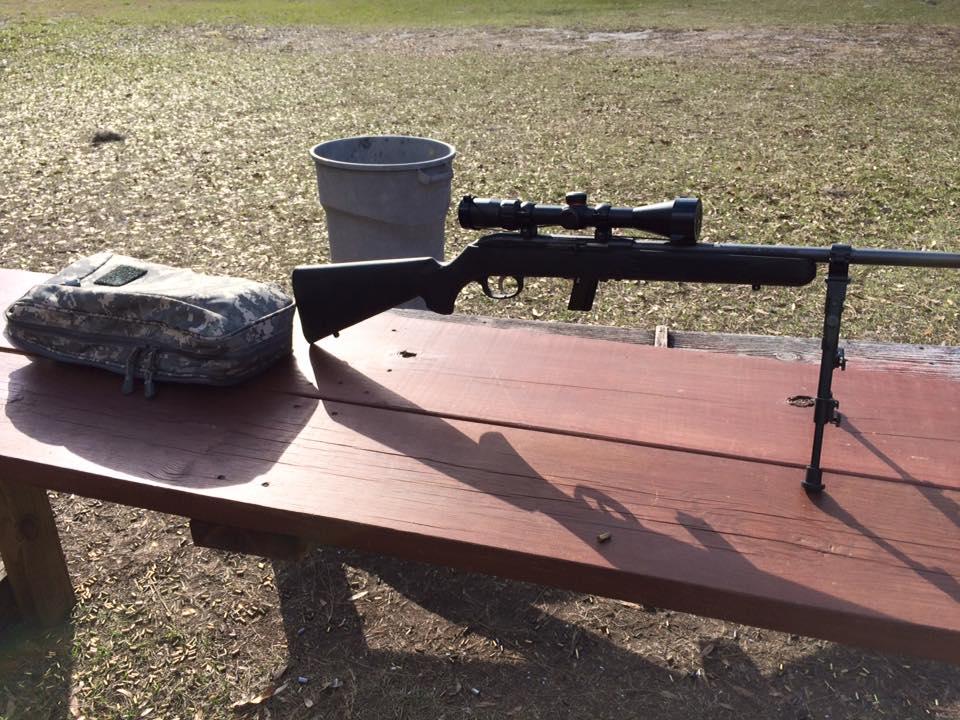
Even with lower light levels, its accuracy remains reliable, giving you the confidence you’re on target with every shot.
The Simmons truezero adjustment target turret system lets you get to zero and keep it there. Our test scope was right on zero even after 100 rounds over 3 sessions. Despite a non-adjustable parallax (it’s set to 50 yards), our groupings were consistent at any distance.
While you don’t get some of the features of much more expensive scopes, you do get a very lightweight, well-made, capable rifle scope with a really nice field of view that’s very budget-friendly.
Criterion | Score (0-10) | Measured/Test Data |
Optical Clarity & Coatings | 6 | Acceptable some glare at high zoom |
Magnification Range | 7 | 3–9× basic performance |
Reticle Utility | 6 | Simple duplex not crisp in low light |
Turrets & Zeroing | 6 | Adequate - slightly mushy feel |
Parallax | 7 | Fixed at 50yds standard bias |
Build Quality & Weight | 7 | 15 oz basic build |
Value | 10 | Very budget friendly |
Box Test Tracking @100yd | 7 | 7.5" 7.3" 7.2" 7.4" ≈1.12 MOA |
Reticle Visibility | 7 | Decent in daylight fades at dusk |
Eye Relief | 8 | 3.7"–3.9" usable and stable |
Grouping 25yd | 8 | 0.45" 5-shot group |
Grouping 50yd | 7 | 0.75" 5-shot group |
Grouping 75yd | 6 | 1.2" 5-shot group |
Grouping 100yd | 5 | 2.8" 5-shot group |
Total | 82, |
4. Best for Hunting: Bushnell Banner Dusk & Dawn Rimfire Scope
undefined
What we liked:
- Great field of view
- Holds zero durably
- Consistent depth of field
- Price
What we didn’t:
- Hunting focus may not fit every need
- Can have QA issues
The second Bushnell product to make the cut on our 22LR-friendly scope roundup, the Bushnell Dusk & Dawn model is hunting-focused and has a specific lens coating designed to optimize visibility in low-light situations (which is when most tags are filled.)
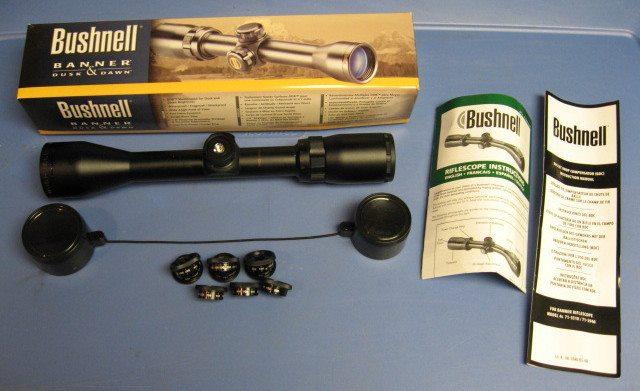
It’s considerably lighter than the above Drop Zone scope, offers a fantastic field of view, and the depth of field is consistent across almost all zoom levels (although we did notice slight fall off at the higher end of magnification).
We also really like how the directional arrows are nice and deeply etched and have contrasting visual indications. The turret clicks are nicely positive and give good feedback without being difficult to turn.
Overall a great option for any rifle – and we liked it enough to recommend it on our list of budget AR-15 scopes as well.
Here’s how the Vortex scored on our tests:
5. Longest Eye Relief: Vortex Optics Crossfire II Rimfire Scope
undefined
What we liked:
- Clear, high-quality glass
- Stays focused throughout magnification range
- Very bright
- Precision glide erector system
What we didn’t:
- Back is larger than the front, which may require risers on some configurations
- Heavier than other options
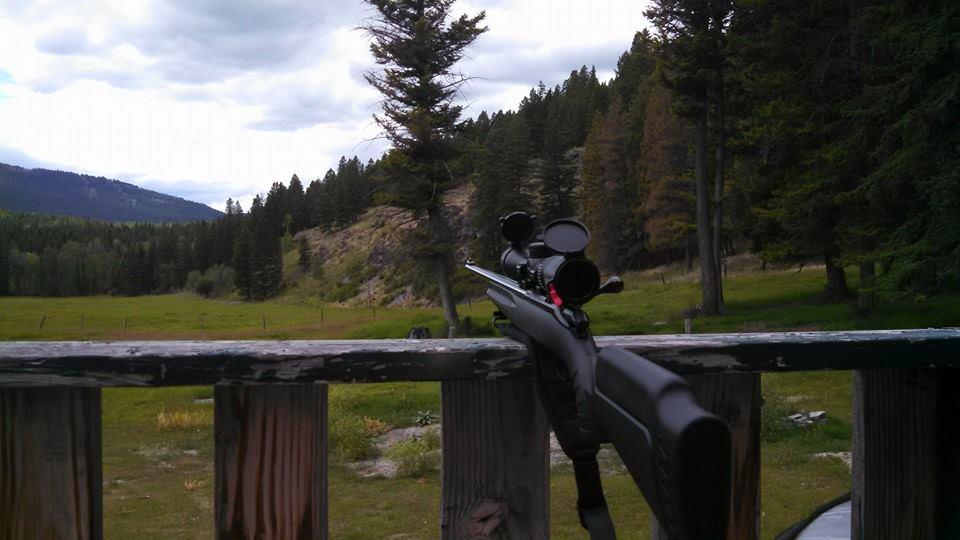
The Vortex Optics Crossfire II Rimfire Scope has a lot of what you want in a rimfire scope: excellent field of view, clear visuals regardless of the magnification setting, high-quality glass, & impressive light transmission wrapped up in thoughtful design (if a little heavier than some other options at 14 ounces).
It combines a number of the features we like on other rimfire scopes but has longer eye relief (at about 4”) so you don’t have to hug the back end of your rifle to get on target.
Here’s how the Vortex Crossfire performed on our tests:
| Criterion | Score (0-10) | Measured/Test Data |
|---|---|---|
Optical Clarity & Coatings | 9 | High transmissivity sharp image |
Magnification Range | 8 | 2–7× ideal for rimfire |
Reticle Utility | 8 | Duplex or BDC clear and precise |
Turrets & Zeroing | 9 | Smooth tactile and accurate |
Parallax | 8 | Fixed at 50yds |
Build Quality & Weight | 8 | Heavier but robust at 14 oz |
Value | 8 | Strong performer at $150 |
Box Test Tracking @100yd | 9 | 6.7" 6.8" 6.8" 6.7" ≈1.0 MOA |
Reticle Visibility | 9 | High contrast across zoom range |
Eye Relief | 9 | 4.0" stable |
Grouping 25yd | 9 | 0.35" 5-shot group |
Grouping 50yd | 9 | 0.65" 5-shot group |
Grouping 75yd | 8 | 1.0" 5-shot group |
Grouping 100yd | 7 | 2.3" 5-shot group |
Total | 93, |
6. Budget Runner-Up: Barska Plinker Rimfire Scope
undefined
What we liked:
- Price
- Quality glass
- Bright visuals
What we didn’t:
- Can lack durability
- More difficult to sight in
If price point is more important to you than features or brand name, I recommend the BARSKA 3-9×32 Plinker-22 Riflescope.
The Plinker-22 is engineered for rimfire rifles and packages 3-9x magnification in a relatively lightweight 11oz package but at a much more budget-friendly price point.
Its 32-millimeter lens captures a lot of light. Despite Barska scopes not exactly being known as high-end units, the Plinker-22 exceeded my expectations – I found it quick to get to zero and easy to adjust. It felt at home on my test rifle, but given that it’s intended as a rimfire scope I didn’t think this would be a good option for much beyond a .22 or .25 rimfire rifle.
At 100 per cent magnification we did get some blurring around the edges of the reticule, and since this comes with Weaver mounts you may need to replace the rings to get it up and running.
That said, once you get it dialed in it’ll give you solid groupings at 50-100 yards, and it’ll make your 22LR feel more capable than iron sights alone. Plus you won’t have to stretch your budget, as the Plinker-22 costs one-third the price of our top picks.
Here’s how the Plinker performed in our tests:
| Criterion | Score (0-10) | Measured/Test Data |
|---|---|---|
Optical Clarity & Coatings | 7 | Bright center mild edge blur |
Magnification Range | 8 | 3–9× versatile |
Reticle Utility | 7 | Basic crosshair functional |
Turrets & Zeroing | 7 | Adequate less precise than higher-end |
Parallax | 7 | Fixed at 50yds |
Build Quality & Weight | 6 | Lightweight less rugged |
Value | 9 | Excellent affordability |
Box Test Tracking @100yd | 7 | 7.4" 7.5" 7.2" 7.3" ≈1.1 MOA |
Reticle Visibility | 7 | Clear in daylight softer in low light |
Eye Relief | 7 | 3.8" usable |
Grouping 25yd | 8 | 0.42" 5-shot group |
Grouping 50yd | 8 | 0.70" 5-shot group |
Grouping 75yd | 7 | 1.2" 5-shot group |
Grouping 100yd | 5 | 2.9" 5-shot group |
Total | 82, |
Types of Rimfire Scopes
Fixed-Power Scopes
In terms of magnified optics, these are the most simple, and often most affordable options out there. A fixed-power scope can’t have its magnification changed, so all it does is magnify the target a set amount.
Because of their simplicity in manufacturing, many of these scopes can offer good quality glass at an affordable price point, which makes them popular options for rimfire rifles, since rimfires themselves tend to be guns that people who are somewhat budget-conscious train with on a regular basis.
Since most people do not plan to shoot their .22 much past 50 yards or so, one of these can be an excellent, practical option.
Variable-Power Optics
Other scopes give the user the ability to change the magnification between two set points, often called a FFP or fixed focal plane scope. These are variable-power optics and have grown in popularity in the AR world in the past few years.
A variable-power optic is a great choice for someone who wants maximum flexibility in their rimfire rifle, whether they plan on engaging targes up close or trying to see what kind of range they can get out of their firearms. These can get fairly expensive.
However, if you get a good quality option, you can get lots of life out of it since it will also go great on other rifles in larger calibers that you might either own now or buy in the future.
Red-Dot Optics
Though most red dot sights are not magnified scopes in the traditional sense, I think that it’s worth taking a second to mention them here. With more .22 models coming with some kind of rail system on top of them, it’s possible to mount the wide range of red dot optics on your .22 as well.
Red dot optics are meant, mostly, for engaging at close ranges, but having a single, fixed point of aim can be useful out to some pretty impressive distances if you’re willing to put in some effort in terms of training.
It’s a good idea to at least think about adding a red dot sight to your rimfire rifle if you want a flexible optic that is likely useful out to the distance that you’d usually shoot a rimfire cartridge out to, and can often be had for a reasonably good deal.
Rimfire Optic Prices
Under $100: Basic functionality, adequate glass, limited features. Good for getting started or occasional use. Expect some compromises in optical quality and build.
For less than $100, it is entirely possible to get a reasonably well-made fixed-power scope or one of the cheaper red dot options that are available today. These scopes often provide an excellent value, but they’re not likely to come with the best glass in the world, or much in terms of shock resistance or anti-fog coatings.
At this price range, though, you can expect a reasonably clear optic that will help you extend the range of your rimfire rifle beyond what you could do with the naked eye. For those on a budget, this is a good time to get into optics, as it’s a lot easier to get a decent optic for a low price now than it has been in the past.
$100-$200: Sweet spot for most shooters. Good glass quality, reliable tracking, essential features without paying for premium materials. Our top overall pick falls in this range.
At around $150, you can find a wide variety of fixed optics, as well as some good red dot options and basic versions of variable-power scopes. For a lot of folks, I think that this price range is the sweet spot: for a little bit more than the absolute base model scopes, it’s possible to get an illuminated reticle, clearer glass, and often larger fields of view thanks to larger diameter lenses.
If you’re looking for an optic that might also serve you well on other rifles in the future, something in this price range is likely to give you a robust optic that will get the job done for years to come.
$200 – $300: Premium features start appearing here – adjustable parallax, better glass coatings, more precise turrets. Worth it if you shoot regularly or want something that’ll last decades.
With optics, the sky is truly the limit and it is entirely possible to spend more on a scope than I paid for our first car. With that said, at about the $200 mark, you can expect to start seeing more features such as shock and water resistance to your variable power optics. I
If you’re willing to lay out several hundred more, then you can get features like ballistic computers and digital scopes, but I doubt that too many people will be doing that for rimfire rifles, even if those rimfire rifles are accurate firearms in their own right. You’ll see products in this price range like the Vortex Crossfire and Leupold VX Freedom rimfire.
$300+: Diminishing returns territory for most rimfire applications. Excellent for competition or if you want the absolute best, but probably overkill for hunting and plinking.
Wrap up
Each of these scopes offers advantages for different users, but our top pick is the Nikon ProStaff Rimfire with BDC Reticle. It was easy to install, get to zero, and the BDC markings were surprisingly effective. It’s a scope that was designed from the ground up to make rimfire rifles more fun at range. It also has all the features that I look for in a rimfire scope:
- Nice amounts of eye relief
- Quality glass that’s nice and clear
- Fog-proof coatings and a sealed housing (bonus: it’s nitrogen-filled)
- Fantastic light transmission
There are quite a few options out in this category, but I hope this article steers you in the right direction. If you have any questions or feedback please drop us a line. If you’re in the market for a rimfire rifle check out our guide to the best 22 rifles – or for optics check out our scope reviews, guide to the best rifle scopes, tips for selecting the best pistol red dot sight, selection of recommended long-range rifle scopes, and best budget AR-15 scopes.
Updated
June 12, 2025 — We’ve updated our rimfire scope guide with detailed test metrics including MOA tracking, group sizes, and reticle clarity, with full scorecards now included for all models.
Sign up for our newsletter
Get discounts from top brands and our latest reviews!

